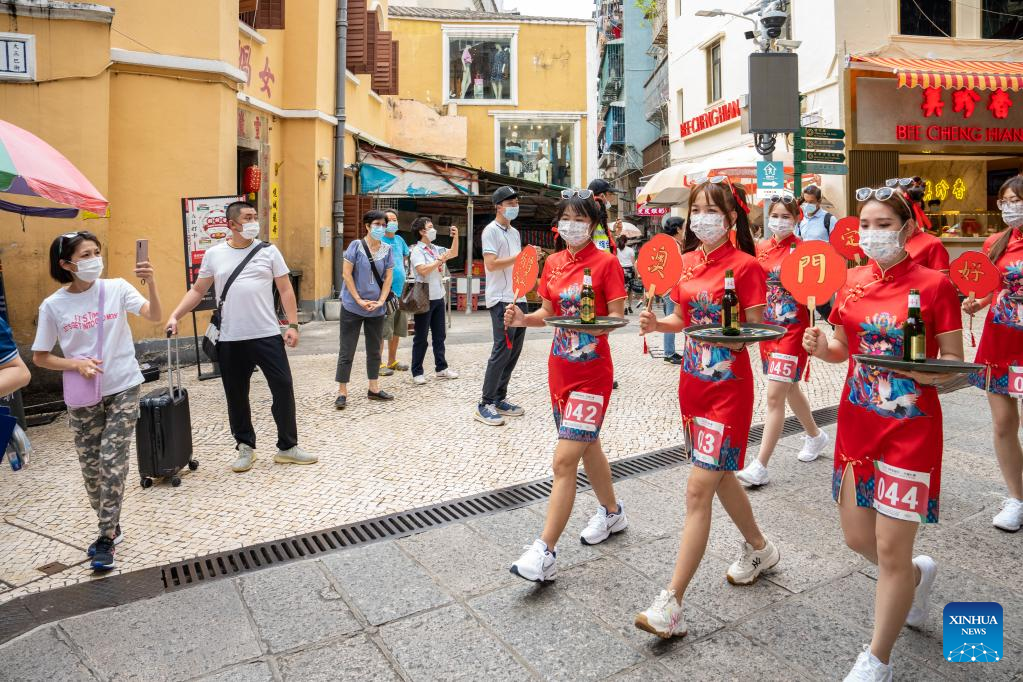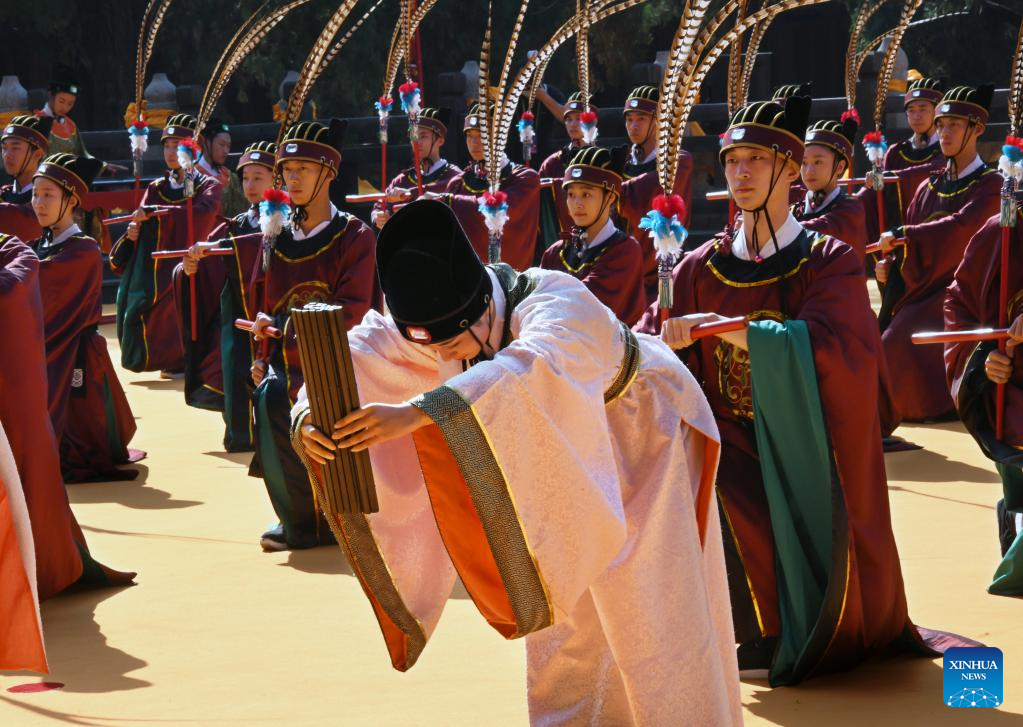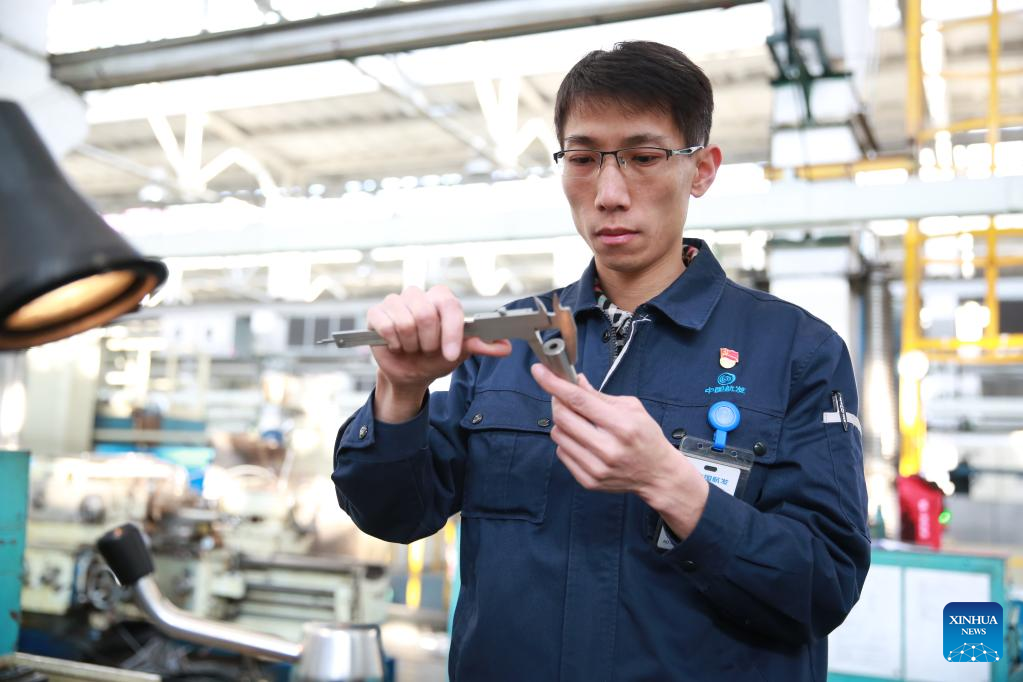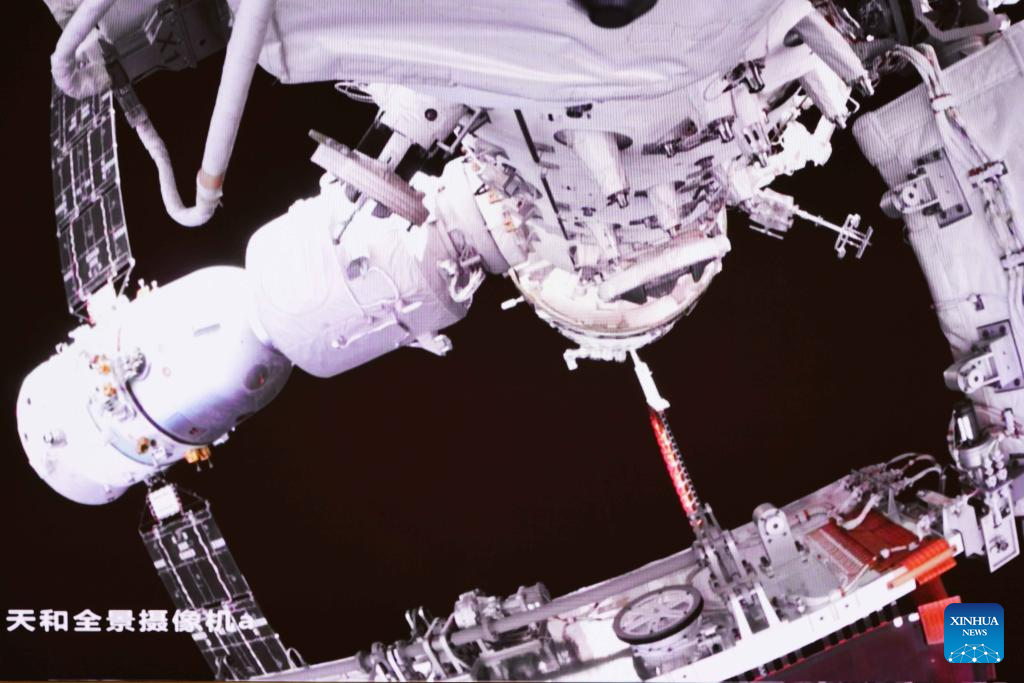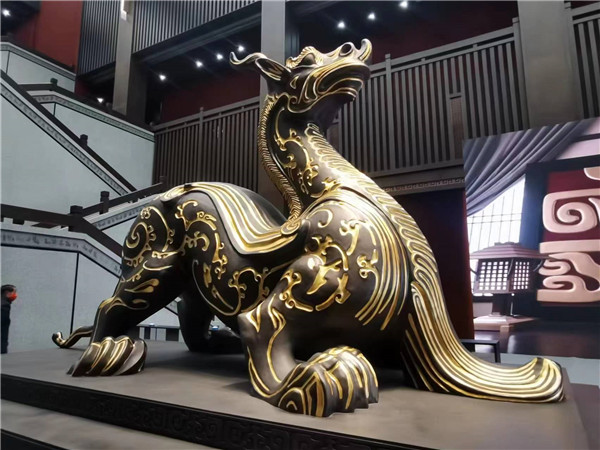
(Photo/Xu Changyin)
More than 10,000 artifacts excavated from the tomb of Liu Fei, King of Jiangdu in the Western Han Dynasty (202 BC to AD 8), met the public for the first time at Danyunshan Museum in Huai'an City on January 12.
The finding of the Dayunshan Mausoleum in the city's Xuyi County was one of the ten most important archaeological discoveries in China in 2011.

The complex included three main tombs, three pits including one containing life-sized chariots, and 13 satellite tombs. It's one of the largest and most sophisticated among tombs of vassal kings of the Han Dynasty.
Zhang Chunpeng, curator of Xuyi County Museum, said the mausoleum covered an area of 250,000 square meters, about 35 standard football pitches, and had a high density of structures.
More than 10,000 relics including exquisite musical instruments, weapons and utensils have been unearthed at the site. Some are precious artifacts such as a jade suit hinged with gold threads, a bronze bell, a gilded-bronze lamp featuring deer, and a silver belt hook that symbolizes eternal love.
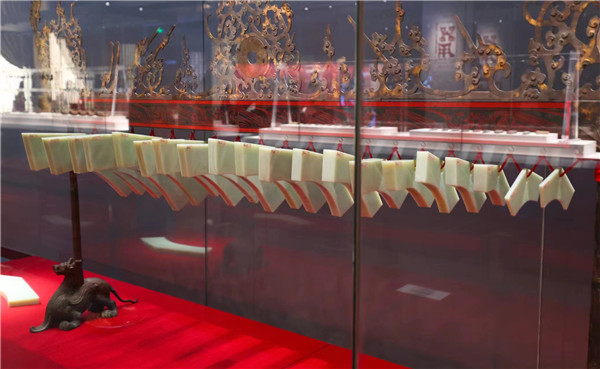
The local government has invested more than 100 million yuan to build the 12,000 sqm museum, making best display of the findings at the resting place of the king.
Sun Xiaoyun, president of the Chinese Calligraphers Association, inscribed the name of the museum.
Established as a county during the Qin Dynasty (221-207 BC), Xuyi has a history of more than 2,200 years. In addition to the Dayunshan Mausoleum, the county also has 66 other natural sceneries and cultural destinations.

